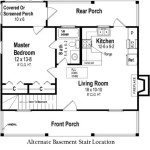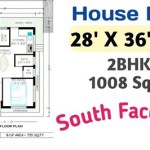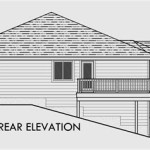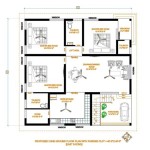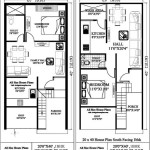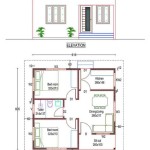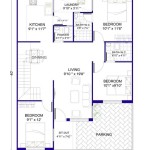Exploring Floor Plans with Indoor Swimming Pools: Design Considerations and Benefits
The integration of an indoor swimming pool into a residential floor plan represents a significant investment and a luxurious addition to a home. These installations require careful consideration of various architectural, engineering, and design factors to ensure optimal functionality, energy efficiency, and aesthetic appeal. This article examines key aspects of floor plans incorporating indoor swimming pools, exploring the benefits, design considerations, and technical requirements that shape their creation.
Benefits of Indoor Swimming Pools
Indoor swimming pools offer numerous advantages over their outdoor counterparts. Primary among these is year-round accessibility, independent of weather conditions. This allows homeowners to enjoy swimming and aquatic exercise regardless of external temperatures or seasonal changes. Furthermore, indoor pools provide a higher level of privacy, shielding users from public view and external noise. This creates a more relaxed and controlled environment for recreation and fitness.
Maintenance is often simplified with indoor pools due to reduced exposure to environmental debris such as leaves, pollen, and insects. This decrease in contamination translates to lower chemical usage, less frequent cleaning, and prolonged lifespan of filtration and circulation systems. Health and therapeutic benefits are also enhanced, as heated indoor pools are ideal for hydrotherapy, rehabilitation, and low-impact exercise, offering relief from joint pain and muscle stiffness in a controlled, comfortable setting.
Finally, the value of a property can be significantly increased with the addition of an indoor swimming pool. It represents a luxury amenity that appeals to discerning buyers seeking enhanced lifestyle options. The presence of an indoor pool distinguishes a property from others in the market, potentially attracting a wider range of potential purchasers and commanding a higher resale price.
Critical Design Considerations for Indoor Pool Floor Plans
Designing a floor plan that successfully incorporates an indoor pool necessitates a holistic approach, addressing architectural, structural, ventilation, and aesthetic elements. The spatial arrangement of the pool area in relation to other living spaces is paramount. The pool should be easily accessible from within the house, often integrated with areas such as gyms, saunas, or recreation rooms, creating a comprehensive wellness zone. Circulation patterns need to be carefully planned to prevent water tracking into other areas of the home.
Structural integrity is critical due to the significant weight of the pool water. The floor and foundational support must be designed to withstand the immense pressure, requiring consultation with structural engineers to ensure compliance with building codes and long-term stability. The pool's dimensions and shape must be carefully considered, factored in terms of intended use, available space, and aesthetic preferences. Recreational pools typically feature larger, shallower areas, while lap pools prioritize length for swimming exercise.
Ventilation and dehumidification are arguably the most crucial aspects of indoor pool design. High humidity levels can lead to condensation, mold growth, and structural damage to the building. A dedicated ventilation system is essential to remove moist air and introduce fresh, dry air, maintaining a comfortable and healthy environment. Dehumidifiers work in conjunction with ventilation to further reduce moisture levels, preventing condensation and preserving the integrity of building materials. The positioning of air vents is critical to ensure proper air circulation throughout the pool area.
Material selection plays a vital role in the longevity and aesthetics of the indoor pool environment. Moisture-resistant materials such as ceramic tile, natural stone, and specialized pool coatings are preferred for walls, floors, and ceilings. These materials resist water damage, prevent mold growth, and provide a durable, easy-to-clean surface. Non-slip flooring is crucial around the pool deck to prevent accidents and enhance safety.
Natural lighting can enhance the ambiance of an indoor pool area. Large windows and skylights can maximize natural light exposure, creating a brighter and more inviting space. However, considerations for solar heat gain and glare control are necessary. UV-resistant window treatments and strategically placed overhangs can mitigate these issues. Artificial lighting should be designed to complement natural light, providing sufficient illumination for swimming and other activities, while also creating a relaxing atmosphere.
Acoustics are often overlooked but contribute significantly to the overall comfort of an indoor pool environment. Hard surfaces such as tile and concrete can reflect sound, creating echoes and reverberation. Acoustic panels, fabric-covered walls, and strategically placed plants can absorb sound and reduce noise levels, creating a more pleasant and peaceful atmosphere. The placement of water features, such as waterfalls or fountains, can also help mask unwanted noise.
Technical Requirements and Considerations
Beyond aesthetic and spatial planning, several technical requirements must be addressed when designing floor plans with indoor swimming pools. These include plumbing, electrical systems, heating, ventilation, and air conditioning (HVAC), and water treatment. These systems must be carefully integrated into the design to ensure efficient operation, safety, and sustainability.
Plumbing systems are crucial for filling, draining, and circulating pool water. Dedicated plumbing lines are necessary to prevent contamination of the potable water supply. Filtration systems remove debris and impurities from the water, maintaining clarity and hygiene. Circulation systems ensure that water is continuously moving, preventing stagnation and promoting even distribution of chemicals.
Electrical systems must comply with stringent safety codes and standards. Ground fault circuit interrupters (GFCIs) are essential to prevent electrical shock hazards. Waterproof lighting fixtures and electrical outlets should be used in the pool area. The pool's electrical system must be properly grounded to prevent stray voltage that could pose a danger to swimmers.
HVAC systems are critical for maintaining a comfortable temperature and humidity level in the pool area. Heating systems can utilize various energy sources, including natural gas, electricity, or solar energy. Efficient heating systems minimize energy consumption and reduce operating costs. As previously mentioned, ventilation and dehumidification systems work to remove moist air and prevent condensation.
Water treatment is essential for maintaining water quality and preventing the growth of bacteria and algae. Chlorine and bromine are commonly used disinfectants. Alternative water treatment methods, such as UV sterilization and ozone generators, are gaining popularity as they reduce the need for chemicals and provide a more environmentally friendly approach. Regular water testing and maintenance are necessary to ensure water quality meets health and safety standards.
Energy efficiency is a growing concern in indoor pool design. Utilizing energy-efficient equipment, such as variable-speed pumps, LED lighting, and high-efficiency heaters, can significantly reduce energy consumption and operating costs. Proper insulation of the pool enclosure helps to minimize heat loss and reduce the load on heating systems. Solar water heating systems can provide a sustainable and cost-effective way to heat the pool water.
Building codes and regulations vary depending on location, but generally address safety, structural integrity, and energy efficiency. Compliance with these codes is essential to ensure the pool is safe and meets all applicable standards. Permits are typically required for the construction of an indoor swimming pool. Consulting with architects, engineers, and contractors who are experienced in designing and building indoor pools is crucial to ensure a successful project.

House Plans With Pool Courtyard

Internal Pool 4 Bedroom House Plans Full Concept For

Fitness Center Floor Plan Design With Pool

Mediterranean House Plan Tropical Style Home Floor With Pool

Hotel Bar With Indoor Pool

Home Plans That Are Perfect For Pools

Gallery Of Indoor Swimming Pool For Sundbyberg Urban Design 20

1 Story House Plans One Modern Luxury Home Floor

Home Plans That Are Perfect For Pools

Spacious Swimming Pool Landscape Design

